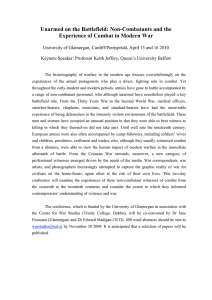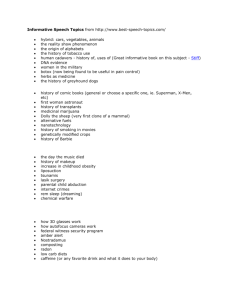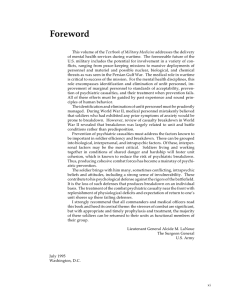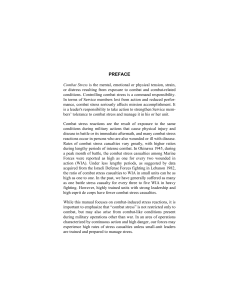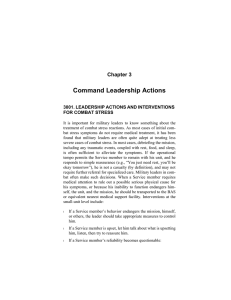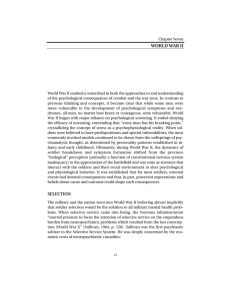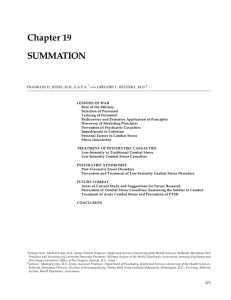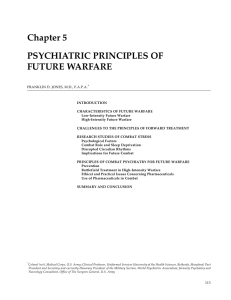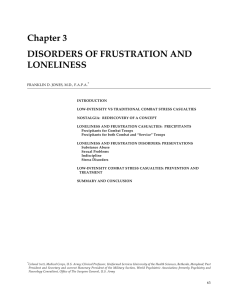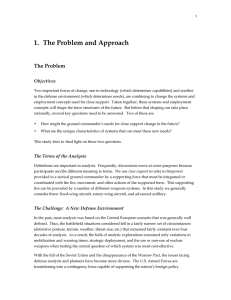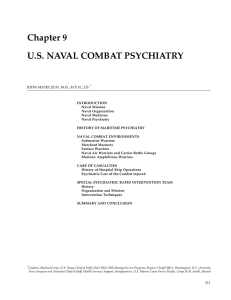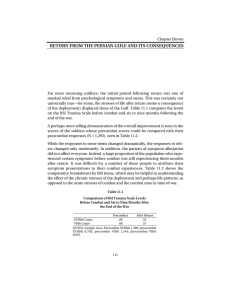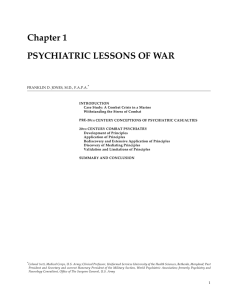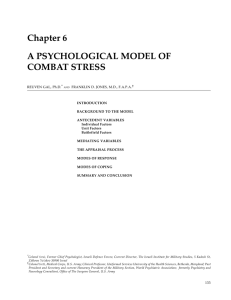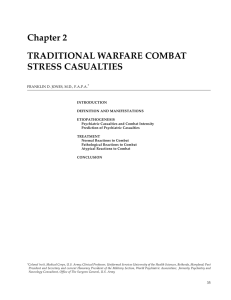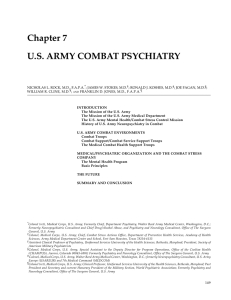Preface
advertisement
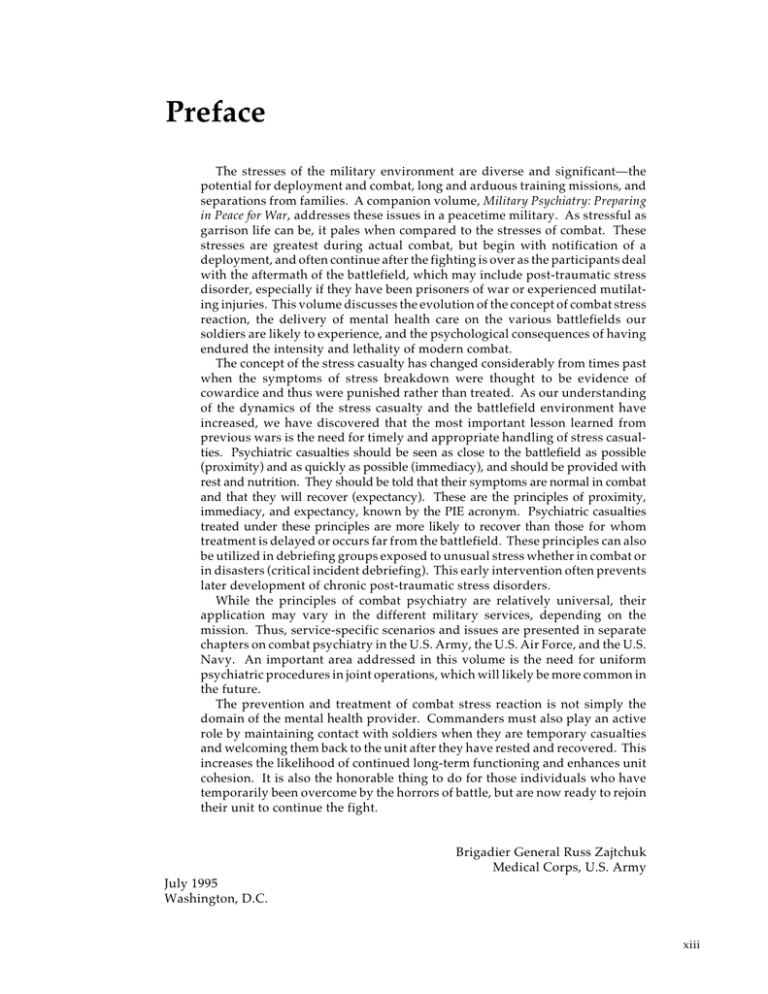
Preface The stresses of the military environment are diverse and significant—the potential for deployment and combat, long and arduous training missions, and separations from families. A companion volume, Military Psychiatry: Preparing in Peace for War, addresses these issues in a peacetime military. As stressful as garrison life can be, it pales when compared to the stresses of combat. These stresses are greatest during actual combat, but begin with notification of a deployment, and often continue after the fighting is over as the participants deal with the aftermath of the battlefield, which may include post-traumatic stress disorder, especially if they have been prisoners of war or experienced mutilating injuries. This volume discusses the evolution of the concept of combat stress reaction, the delivery of mental health care on the various battlefields our soldiers are likely to experience, and the psychological consequences of having endured the intensity and lethality of modern combat. The concept of the stress casualty has changed considerably from times past when the symptoms of stress breakdown were thought to be evidence of cowardice and thus were punished rather than treated. As our understanding of the dynamics of the stress casualty and the battlefield environment have increased, we have discovered that the most important lesson learned from previous wars is the need for timely and appropriate handling of stress casualties. Psychiatric casualties should be seen as close to the battlefield as possible (proximity) and as quickly as possible (immediacy), and should be provided with rest and nutrition. They should be told that their symptoms are normal in combat and that they will recover (expectancy). These are the principles of proximity, immediacy, and expectancy, known by the PIE acronym. Psychiatric casualties treated under these principles are more likely to recover than those for whom treatment is delayed or occurs far from the battlefield. These principles can also be utilized in debriefing groups exposed to unusual stress whether in combat or in disasters (critical incident debriefing). This early intervention often prevents later development of chronic post-traumatic stress disorders. While the principles of combat psychiatry are relatively universal, their application may vary in the different military services, depending on the mission. Thus, service-specific scenarios and issues are presented in separate chapters on combat psychiatry in the U.S. Army, the U.S. Air Force, and the U.S. Navy. An important area addressed in this volume is the need for uniform psychiatric procedures in joint operations, which will likely be more common in the future. The prevention and treatment of combat stress reaction is not simply the domain of the mental health provider. Commanders must also play an active role by maintaining contact with soldiers when they are temporary casualties and welcoming them back to the unit after they have rested and recovered. This increases the likelihood of continued long-term functioning and enhances unit cohesion. It is also the honorable thing to do for those individuals who have temporarily been overcome by the horrors of battle, but are now ready to rejoin their unit to continue the fight. Brigadier General Russ Zajtchuk Medical Corps, U.S. Army July 1995 Washington, D.C. xiii
